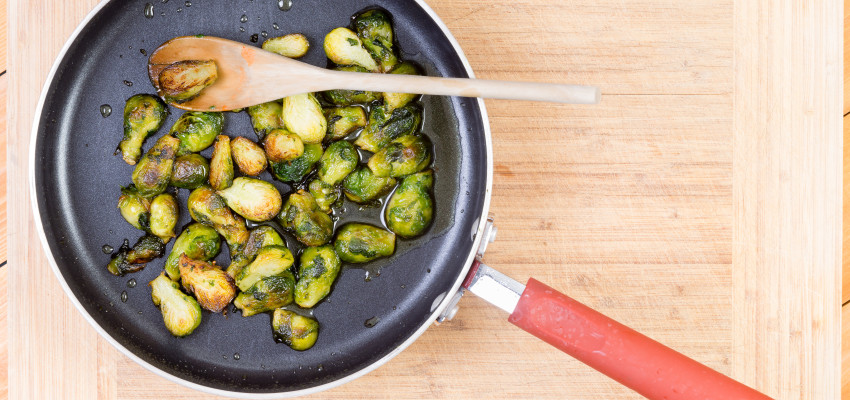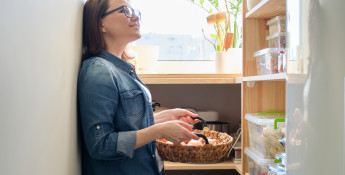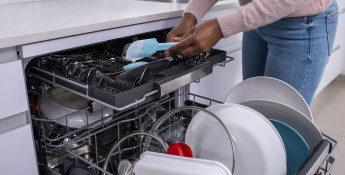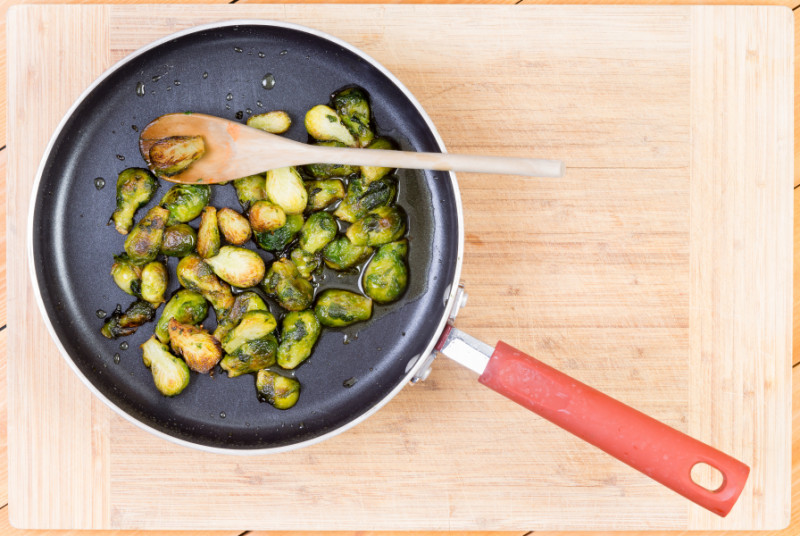By Chef Alli on April 22, 2022
Caring for Nonstick Cookware
Learn how to protect your favorite skillets and saucepans

Use the right tools
Even the most durable nonstick finish can be quickly gouged and damaged when metal or wooden utensils are used.
Instead, using silicone spatulas and spatula-spoons when cooking in nonstick skillets and saucepans ensures the finish isn’t compromised.
Be gentle
Nonstick cookware usually requires very little clean up, and it is important to go easy on the finish any time you wash it.
When washing any type of cookware, it helps if the chore is addressed immediately. The longer a pan sits out, the easier it is for foods to really grab hold.
Before washing, be sure the cookware is completely cooled. Using a soft cloth (I like the microfiber cloths) with gentle dish soap and very warm water (but never hot), wash the nonstick pan both inside and out.
Because nonstick cookware can’t withstand any type of scrubber action during clean up, use a wet sponge with some baking soda for stuck-on jobs or extra greasy situations.
Follow up with another gentle wash with dish soap, then immediately dry thoroughly.
Don’t use the dishwasher
Nothing in the kitchen ruins cookware and baking sheets quicker than the dishwasher.
Even if nonstick cookware is specifically labeled as dishwasher safe, don’t be fooled. Many pans and baking sheets have gone into the dishwasher and have never been the same since.
Steaming hot water, excessive water pressure and abrasive detergents can eat right into the coating, quickly causing it to thin and deteriorate.
Soon, your easy-to-use nonstick skillet no longer has that beautiful care-free coating that made cooking such a delight.
Gentle hand washing of nonstick cookware and sheet pans will always be the best choice for prolonged life.
No cooking sprays
No, fats aren’t needed for cooking in nonstick cookware - that’s the whole point, right?
Yet, all good cooks know that adding just a bit of fat to a skillet is what quickly helps foods to brown and caramelize on the exterior as they cook, giving us what we desire most: added flavor.
Because nonstick sprays are handy and easy to use, they become our go-to source for that quick shot of fat enhancement.
The problem? Over time (and almost without notice) nearly all nonstick cooking sprays leave behind a sticky residue.
Before we realize it, the buildup hardens like a rock and when attempts are made to remove it, permanent damage is caused to nonstick cookware.
Instead, use oil or butter for cooking in nonstick cookware since these fats cook clean, leaving no residue behind to deal with.
Don’t use high heat
Nonstick cookware was not created for high heat. Hot temperatures damage the finish and can also potentially release harmful chemicals.
If you have a recipe that calls for high heat, say for frying up crispy chicken or searing a big juicy steak, give the nonstick cookware a break and let your cast iron skillet do the job.
Don’t leave a hot pan empty
I’ll always tell you we should never put ingredients into a pan that isn’t properly preheated. A cold skillet is the worst hostess.
If you’re a bit forgetful like I am, you can turn around to realize your favorite nonstick skillet is way past pre-heated. It’s quite literally “smokin’ hot,” without a single ingredient in site.
Sadly, all it takes is two or three times of forgetfulness and we have a nonstick skillet well on its way to Warp City….and at warp speed!
To prolong the longevity of your nonstick cookware, be sure that as soon as the skillet or saucepan is nicely preheated, ingredients are added at once for cooking.
Stay away from tomatoes
Regardless of how you pronounce the word tomato, keep ‘em far, far away from your nonstick cookware.
Highly acidic foods, such as spaghetti sauce or marinara, should never be cooked in nonstick skillets or pots since it is damaging to the finish.
Instead, bring out your favorite stainless-steel pan or enamel-coated cast iron skillet for cooking tomato-based dishes and recipes.
Don’t stack them
Nonstick cookware doesn’t fare well when stacked together; the finish can’t take the abrasion and soon scratches, dings and pitting run amuck.
Instead, hang each piece individually from a storage rack (such as a baker’s rack or pegboard wall) where they don’t touch each other.
If stacked storage is your only option, place paper plates or coffee filters as buffers between each pan.
Retire when ready
Don’t wait until your nonstick cookware has lost all its luster before letting it out to pasture.
Unless your high-quality nonstick pans are used infrequently, their average life span is 4-5 years, perhaps a bit longer if you’re very loving to them.
If the nonstick surface has become pitted or may even be peeling a bit, it’s time to invest in a new set of cookware.





